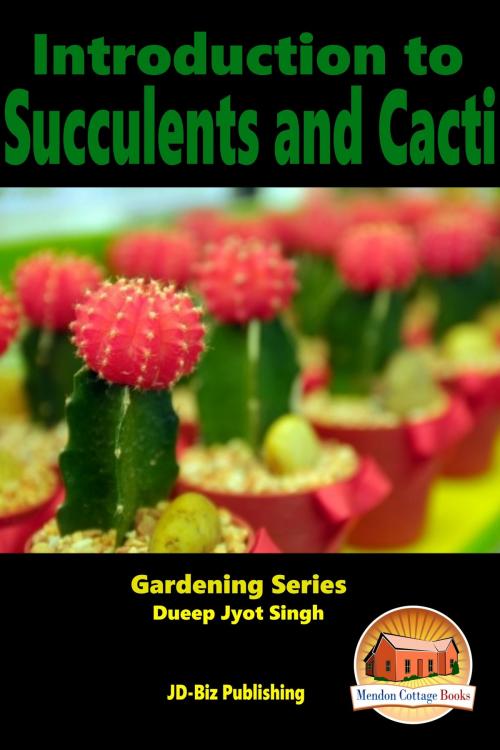| Author: | Dueep Jyot Singh | ISBN: | 9781311526014 |
| Publisher: | Mendon Cottage Books | Publication: | November 25, 2015 |
| Imprint: | Smashwords Edition | Language: | English |
| Author: | Dueep Jyot Singh |
| ISBN: | 9781311526014 |
| Publisher: | Mendon Cottage Books |
| Publication: | November 25, 2015 |
| Imprint: | Smashwords Edition |
| Language: | English |
Table of Contents
Introduction
How to Recognize Succulents
Conophytum
Cultivation of Cactuses
Potting
Best Potting Compost
Re-Potting Your Cacti
Watering of Your Succulents
Propagation of Succulents
Propagation through Seeds
Propagation through Cuttings
Leaf cuttings
Propagation through Offsets
Pests and Diseases
Diseases
Cultivated Succulent Plants
Agave
Aloe
Conophytum
Crassula
Echeveria
Euphorbia
Haworthia
Opuntia
Mesembryanthemums- Fenestraria
Conclusion
Author Bio
Publisher
Introduction
The first time I heard the word “succulent” in reference to a group of plants, I was a bit bewildered. That was because I associated this particular term with delicious things to eat like succulent, juicy spareribs or succulent luscious fruit, fresh off a tree! But here was an experienced gardener talking about a plant, which he called a succulent? It did not look remotely edible at all!
Cacti belong to the “Succulent Plants” family. Plants with green leaves that are left in the sun without water are going to flag and wilt within a few hours. They are going to die within a few days. However, mother nature has made some plant equivalents of camels, which can go for long periods without any water.
These plants normally live in a hot and dry climate and they have managed to survive since the dawn of time. That is because they are able to adapt themselves to their environment. They are going to pass the dry season as leafless shrubs, seeds or as dry bulbs.
Cactus as well as other succulent plants are capable of storing moisture, in their stems and leaves, especially when there is plenty of moisture in the atmosphere. This is so that they can get plenty of liquid available to them, when the atmosphere becomes dry and arid.
Table of Contents
Introduction
How to Recognize Succulents
Conophytum
Cultivation of Cactuses
Potting
Best Potting Compost
Re-Potting Your Cacti
Watering of Your Succulents
Propagation of Succulents
Propagation through Seeds
Propagation through Cuttings
Leaf cuttings
Propagation through Offsets
Pests and Diseases
Diseases
Cultivated Succulent Plants
Agave
Aloe
Conophytum
Crassula
Echeveria
Euphorbia
Haworthia
Opuntia
Mesembryanthemums- Fenestraria
Conclusion
Author Bio
Publisher
Introduction
The first time I heard the word “succulent” in reference to a group of plants, I was a bit bewildered. That was because I associated this particular term with delicious things to eat like succulent, juicy spareribs or succulent luscious fruit, fresh off a tree! But here was an experienced gardener talking about a plant, which he called a succulent? It did not look remotely edible at all!
Cacti belong to the “Succulent Plants” family. Plants with green leaves that are left in the sun without water are going to flag and wilt within a few hours. They are going to die within a few days. However, mother nature has made some plant equivalents of camels, which can go for long periods without any water.
These plants normally live in a hot and dry climate and they have managed to survive since the dawn of time. That is because they are able to adapt themselves to their environment. They are going to pass the dry season as leafless shrubs, seeds or as dry bulbs.
Cactus as well as other succulent plants are capable of storing moisture, in their stems and leaves, especially when there is plenty of moisture in the atmosphere. This is so that they can get plenty of liquid available to them, when the atmosphere becomes dry and arid.















